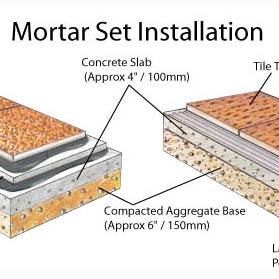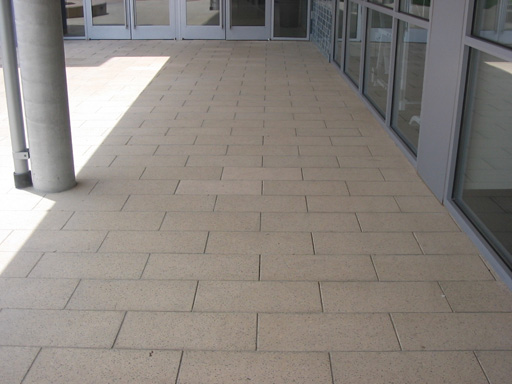Introduction to Paver Pedestal System
The conventional method of setting precast concrete, stone
or other type paving slabs into a sand, gravel or mortar bed
has had a deleterious effect on many types of promenade and
other deck systems. The entry of surface water into these
systems causes pavers to heave due to freeze-thaw cycling,
wash-out, break-up, and eventual deterioration of the water-proofing
membrane over occupied areas below. The high cost of replacement,
leveling and aligning the pavers as well as repairs to the
waterproofing, is an ongoing maintenance problem.
Tile Tech Paver Pedestal System has been designed to meet North American
climatic and architectural requirements - deck surfaces can
be elevated to separate and provide a drainage space between
pavers and the waterproofed supporting structure below.
The concept of using concrete pavers as roof ballast, plaza
deck and terrace pavers has created new opportunities for
otherwise lost space. Roofs and Decks can now be functional,
as well as attractive when viewed from higher elevations.
Tile Tech Paver Pedestal System provides durability, protection
and performance for the roof system from harsh weather conditions.
- The popularity of energey-efficient roofs, or Green Roofs, is increasing as
its value is appreciated. Tile Tech Pavers has been developing a series of pavers that provide
reflectance and emissive values providing great performance to the Green Roof concept.
What Are Interlocking Pavers?
 |
“The definition of ‘interlock’ is: to connect so that
motion of any part is constrained by another”.
Interlocking pavers are most commonly made from cement
or concrete, and tend to simulate the effects of cobblestone
pathways.
This special interlocking feature enables pavers to
be easily installed without the use of mortar. Interlocking
pavers
|
have the advantage of being an easy self-installation paving
material for the homeowner or contractor.
Interlocking pavers connect together through the use of sand,
and can cover any patio, decking, driveway or walkway. Virtually
any application that bricks or concrete would be used for,
interlocking pavers is another alternative.
| Interlocking pavers are available in many colors and
designs. They are modular, meaning that they connect together
to form a variety of geometric designs. |
|
Proper Installation of Interlocking Concrete Pavers

|
When installed properly, the combination of the pavers,
bedding sand, edge restraint and joint sand causes them
to bind, allowing the paver units to become a unified
whole.
Interlocking paver blocks have the ability to transfer
loads and
|
stresses laterally by means of an arching of bridging between
units, spreading the load over a large area, reduces the stress
thereby allowing heavier loads and traffic over sub-bases which
normally would require heavily reinforced concrete.
|